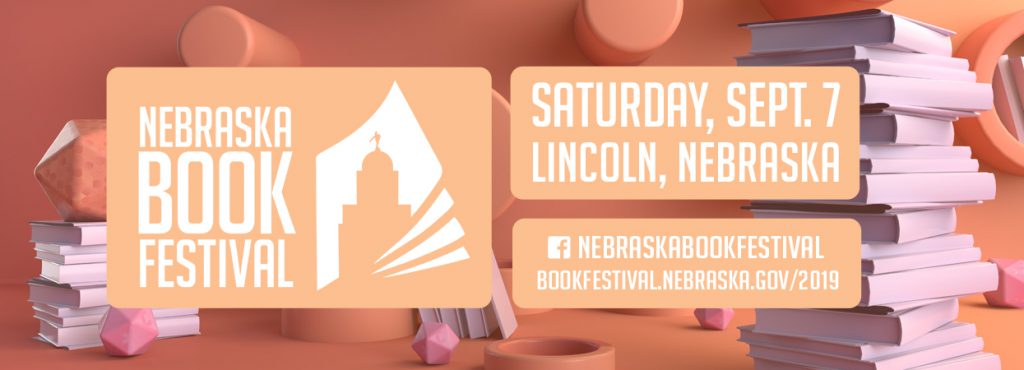Search the Blog
Categories
- Books & Reading
- Broadband Buzz
- Census
- Education & Training
- General
- Grants
- Information Resources
- Library Management
- Nebraska Center for the Book
- Nebraska Memories
- Now hiring @ your library
- Preservation
- Pretty Sweet Tech
- Programming
- Public Library Boards of Trustees
- Public Relations
- Talking Book & Braille Service (TBBS)
- Technology
- Uncategorized
- What's Up Doc / Govdocs
- Youth Services
Archives
Subscribe
Tag Archives: Friday Reads
Friday Reads: Crosstalk, by Connie Willis
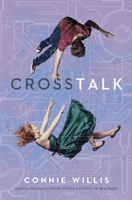
In Crosstalk by Connie Willis, a simple surgery to promote empathy between romantic partners goes hilariously wrong. It shows how constant, complete, personal connection is anything but desirable. Briddey Flannigan should have known, since the cell phone company, (COMMSPAN) she works for in a US city, is very nearly a model of what will come, with gossip seemingly carried on the breezes! And avoiding telling her family the news that she and her perfect boyfriend, Trent Worth will be having the implantation of a devise which will result in empathy,( if they are truly in love), before she tells her friends at work is, well, a lost cause.
The entire novel moves at a breakneck pace from one situation to another. Just as soon as Bridey has settled her family, her boyfriend Trent springs a speeded up surgery schedual on her, so she’s off to the hospital. And avoiding gossip and her family, by hiding her car. After seeing that her family has no boundaries where it comes to Bridey’s privacy one begins to see why she’s so secretive. And why she settles on the up and coming executive Mr. Worth, and his push to get the EED (the empathy device) before they marry. Which her family and CB Schwarz think is a really bad idea–and they all email, call, or text her. She argues it’s been tested before, and that even celebrities have had it done, and that they are even having the Dr. who invented the device doing the surgery. The surgery goes well. The aftereffects are, well, telepathy. And of course, the first person she hears is not Trent, but CB Schwarz, who is naturally telepathic.
Ms. Willis brings the claustrophobic and confusing experience that we imagine to be telepathy to a print page well. It can be confusing for the reader as well, but having a sense of the harried life of Briddey, makes it worth a little push just to get through those passages. It also gives her new relationship with CB a understandably difficult start. And exposes the real reasons behind Trent’s wanting to get the EED before getting married, like other couples.
This is the perfect introduction to Connie Willis and her comic timing, her patter, and infectious humor and sense of irony. If you enjoy Crosstalk, you’ll enjoy, To Say Nothing About the Dog, and Bellwether.
Crosstalk, by Connie Willis, Del Rey, 978-0-34554067-6
Posted in Books & Reading
Tagged Connie Willis, Crosstalk, Friday Reads, Rom-Com, Science Fiction, Telepathy, too-connected society?
Leave a comment
Friday Reads: The Absolutely True Diary of a Part-Time Indian by Sherman Alexie
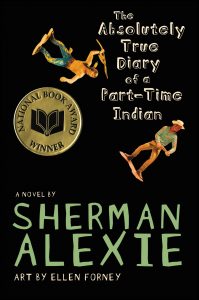
Sherman Alexie’s The Absolutely True Diary of a Part-Time Indian was banned or challenged in several communities. ALA’s Banned Book Spotlight quotes a complaint from one of the challengers, highlighting “shocking words of profanity, sexual innuendo and violence”. A reviewer on Goodreads recommends the book for older audiences because she is “all for letting kids enjoy their innocence for as long as possible”. This book does have adult themes, including alcoholism and child abuse, with the constant bitterness of death glaring between the pages.
Parents and schools can try to ban books and protect innocent minds. However, we cannot ban reservations to protect the innocent. For many kids living in these areas, life is not appropriate for a young adult audience. What is the alternative to life? We have a theme.
How do I know about reservation life? My dad is from the Bad River Band of Chippewa in Wisconsin. I grew up hearing the myths and legends of an amazing culture. The myths are better than the reality of that reservation. Poverty runs rampant, and alcohol and drugs are the strong thematic elements that propel many people through the day. The ones who leave the reservation are challenged to change their way of life. Reservations are often a small, tight-knit community. Leaving is traitorous. Leaving can mean you are no longer Indian. It’s like saying your skin changes color as soon as you cross the border. Not everyone thinks this way, and not every reservation is the same. But I’ve seen it often enough.
I didn’t grow up on the reservation. I grew up with the aftermath. That is another story. We’re here to talk about Junior, a Spokane Indian born with brain damage to alcoholic parents. He’s the protagonist of The Absolutely True Diary. This is the story of how he leaves the reservation by attending an all-white rural school, 22 miles from the reservation. He hitchhikes his way to school and back, catching fire and vitriol on both ends.
Yet he is determined to break free and make change happen. I’ve read the book, and concur that it is absolutely true. Change can be like raking over hot coals. The humor and cartoons make the pain bearable. Humor is the collection of small respites necessary to drive change to fruition. If you want to bear witness to the truth of life, laid bare by a teenage protagonist, please read this book. Read deeply, and take the wise words of a teenage Indian living through real, thematic elements: “Life is a constant struggle between being an individual and being a member of the community”.
Friday Reads: The Little Book of Big Feelings: an Illustrated Exploration of Life’s Many Emotions by Maureen “Marzi” Wilson
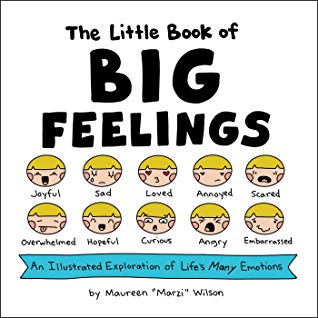
Being the good reader that I am every holiday season I make sure to include books on my gift list. (Yes, my family still does Christmas lists but that’s a story for another time.) Sometimes I’ll ask for the latest hot fiction title, or I might want a larger coffee table book that I’ve had my eye on but couldn’t justify the price. This year though I went with something small enough to fit in my stocking.
The Little Book of Big Feelings is authored and illustrated by Marzi Wilson, creator of “Introvert Doodles”. If you’ve ever wondered about the care and feeding of your fellow introvert, or are one yourself, I highly recommend checking her out. She has a lovely little Instagram page, perfect material to scroll through when that party gets to be a bit to much and you’re taking a moment to yourself behind a potted plant. She has three other books, as well, including an activity book!
This latest book takes a look at those big feelings we all get, joy, sadness, anger and so on, how they may look different to an introvert and, greatest of all, how to deal with them. Reading this book is a great way to get perspective on those emotions and even to start processing and accepting them. Each section deals with one particular emotion in small cartoons as well as meatier parts dealing with they psychology behind them. This is a fun and easy to grasp little book that, while slightly geared towards adults, would totally be useful for those fun balls of emotions that are teens.
Friday Reads: Exile from Eden, by Andrew Smith
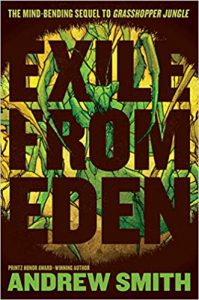
Exile from Eden, the featured title in this Friday Reads, is the sequel to Andrew Smith’s 2014 apocalyptic novel, Grasshopper Jungle, which I claimed as my new favorite book in a July 15, 2016 Friday Reads. I guess, therefore, this is a sequel Friday Reads.
Exile from Eden begins sixteen years after six-foot-tall praying mantises with a taste for human flesh forced Austin Szczerba, Robby Brees, and Shann Collins, along with Robby’s mother, Connie Brees, her boyfriend, Louis Sing, Shann’s mother and stepfather, Wendy and Johnny McKeon, and Austin’s dog, Ingrid, to hole up in an underground bunker, called Eden. During these sixteen years, Johnny McKeon and Ingrid have died, and Arek Szczerba and Mel Sing have been born. Arek is the son of Austin and Shann, though he considers Robby his second father. Mel is the daughter of Connie and Louis.
Narrated by sixteen-year-old Arek, Exile from Eden tells the story of what happens when he and fifteen-year-old Mel leave Eden (or, as Arek calls it, “the hole”) to search for Austin and Robby, who have failed to return from one of their regular supply-gathering missions. A road trip adventure ensues. As was the case with Grasshopper Jungle, however, Exile from Eden is about so much more than a mere plot summary would suggest. After all, as Austin stated in Grasshopper Jungle, “[g]ood books are about everything.”
In Grasshopper Jungle, Austin was obsessed with recording history and telling the truth. In Exile from Eden, Arek, his son, also ruminates on truth—how we construct it for ourselves and try to convey it to others: “All stories are true the moment they are told,” Arek states in the opening sentence of the book. “Whether or not they continue to be true is up to the listener” (3).
Because he was born and raised in the hole, Arek has no firsthand knowledge of the before-the-hole world, and extremely limited exposure to the new post-apocalyptic world outside the hole. To address this deficit, his father, Austin, brings back artifacts—including books, maps, and paintings—to try to build a model of the world for Arek. As Arek discovers after leaving the hole, however, “the model . . . is not the thing” (110). This leads him to further epistemological exploration of what we can know and how we can know it:
. . . My father’s model of the world was supposed to represent everything that was outside the hole. The only thing that can re-present anything real is the thing itself. No models can ever adequately perform that job.
The model presents—and re-presents—only the model, and nothing more.
And the data—what’s really outside the hole—does not call to us, so we must go to it, and then interpret its meaning with our incompetent human minds. The data is mute; we give it an imperfect voice. (110)
Exile from Eden juxtaposes the before-the-hole world, with its rules and protocols, shame and inhibitions, with the terrifying, unstructured freedom offered by the after-the-hole world. In Eden, Arek’s grandmother, Wendy–“SPEAKER OF LAWS” (20), believer in following instructions, and segregator of the sexes—represents the pre-hole world. The promise of the post-hole world, on the other hand, is captured most powerfully by a line from Herman Melville’s Moby-Dick, recited by Arek’s father, Austin, after he and Arek finish reading the book aloud to each other: “In landlessness alone resides the highest truth, shoreless, indefinite as God” (244).
At one point, Austin tells Arek “you and Mel are like the first humans on earth. You are the new people, without the baggage everyone carried with them, without end, from before” (188). Indeed, after months outside the hole, Arek describes Mel and himself as “joined to the world outside, not as pieces of a model, but as the thing itself” (347).
In the final chapter, when he and Mel finally reunite with Austin and Robby, Arek, channeling Melville, describes himself as “Shoreless Man.” And when Austin asks how he likes it outside the hole, Arek replies “There are no rules, and it’s wild” (353). Based on the premise set up throughout the book, this is a good thing and a happy ending.
Smith, Andrew. Exile from Eden. New York: Simon & Schuster Children’s Publishing, 2019.
Friday Reads: Nebraska During the New Deal–The Federal Writers’ Project in the Cornhusker State by Marilyn Irvin Holt
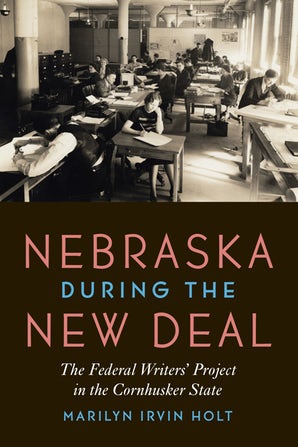
I don’t generally read a lot of non-fiction, but occasionally I come across a title that really catches my Nebraska history eye: Nebraska During the New Deal : the Federal Writers Project in the Cornhusker State. And for those not already familiar with the writing of Marilyn Irvin Holt (The Orphan Trains, Children Of the Western Plains, and others), her meticulous research and insightful writing never disappoints. I highly recommend her newest title as another excellent example of the history of Nebraska and the Nebraska spirit.
As a New Deal program, the Federal Writers’ Project (FWP) aimed to put unemployed writers, teachers, and librarians to work. The contributors were to collect information, write essays, conduct interviews, and edit material with the goal of producing guidebooks in each of the then forty-eight states and U.S. territories. Project administrators hoped that these guides, known as the American Guide Series, would promote a national appreciation for America’s history, culture, and diversity and preserve democracy at a time when militarism was on the rise and parts of the world were dominated by fascism.
Marilyn Irvin Holt focuses on the Nebraska project, which was one of the most prolific branches of the national program. Best remembered for its state guide and series of folklore and pioneer pamphlets, the project also produced town guides, published a volume on African Americans in Nebraska, and created an ethnic study of Italians in Omaha. In Nebraska during the New Deal Holt examines Nebraska’s contribution to the project, both in terms of its place within the national FWP as well as its operation in comparison to other state projects. (University of Nebraska Press)
Friday Reads: Minecraft: The End by Catherynne M. Valente

First, a confession, I have never actually played Minecraft. I know the basic concepts and I’ve watched other people play it, I just haven’t played it myself (yet). The only reason I picked this book up is that I’ll read anything and everything by Catherynne. I don’t know the lore of the game, so I’m sure I missed certain things, but I still really enjoyed this book (and you don’t need to read the other three official Minecraft novels before this one either).
This is a story of two young twelve-year-old endermen. Twin brother and sister, Fin and Mo, have always lived on their purple ship attached to the end city of Telos with their angry little pet shulker, Grumpo. They spend their time scavenging for very good junk or just junk, visiting the Ender Dragon (ED) who circles and watches over the End, or with their friend Kan who is very much an outsider. They all communicate telepathically, but still have a distinct “voice.” It’s definitely interesting how Catherynne writes. I really didn’t expect to care so much about little square shadow creatures.
Individually, endermen become dumb and angry, but stacked together with other elders and fragments, they become smarter, stronger, better. However, Fin and Mo are happy just the two of them and are plenty smart, thank you very much.
Then the invaders arrive from another dimension. Humans. Fin and Mo now have to defend their home and treasures as everything they know changes.
Friday Reads: The Lady From the Black Lagoon
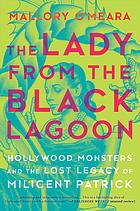
The Lady From the Black Lagoon is a biography, but it’s also not a biography. Sure, it’s the compelling life story of Milicent Patrick, a woman on both sides of the Old Hollywood camera. Milicent was a striking figure in front of the camera, but she was a real trailblazer in the world of make-up and design—specifically monster design, most notably, the Creature from The Black Lagoon. It’s also the story of her biggest fan, author Mallory O’Meara, and her quest to find out Milicent’s story, and her determination that Milicent get the credit she deserves for her work.
Along the way, O’Meara faces challenges. Milicent reinvented her identity many times, and used variations of her name personally and professionally–which was not unusual in Hollywood by any means, but it still poses research challenges. Luckily, O’Meara was already knowledgeable about Old Hollywood, and it was her voracious interest in old monster movies that led her to Milicent in the first place. O’Meara also gets some good research advice from some helpful librarians and archivists, which warmed this library worker’s heart.
This book is full of amazing stories. We get Milicent’s childhood years spent growing up on the Hearst Castle grounds, because her father was an engineer on that never-ending project. We also get the complicated family relationships that shaped Milicent’s life. We learn a lot about the behind-the-scenes production of Old Hollywood movies—and what a tough place it was for a woman to work, and how easy it was for Milicent’s labor to be exploited and almost erased. What really brings it all together, though, are the parallels that O’Meara is able to draw between her own career in movie production, with Milicent’s experience. O’Meara understands why Milicent chose to fight some battles and chose to walk away from others, and shares her own stories—some inspiring, some frustrating. (I have a guess who the unnamed voiceover jerk actor is, so let me know if you do, too.)
I listened to this book, and the author read it. That’s a risk—and in this case, it’s one that paid off! The author has a pleasant and clear voice, and her passion for her subject comes through loud and clear. After listening, I learned that it’s on many best-of lists for 2019, and I’m not surprised one bit.
O’Meara, Mallory. The Lady from the Black Lagoon: Hollywood Monsters and the Lost Legacy of Milicent Patrick. , 2019. Print.
Friday Reads: A Keeper by Graham Norton
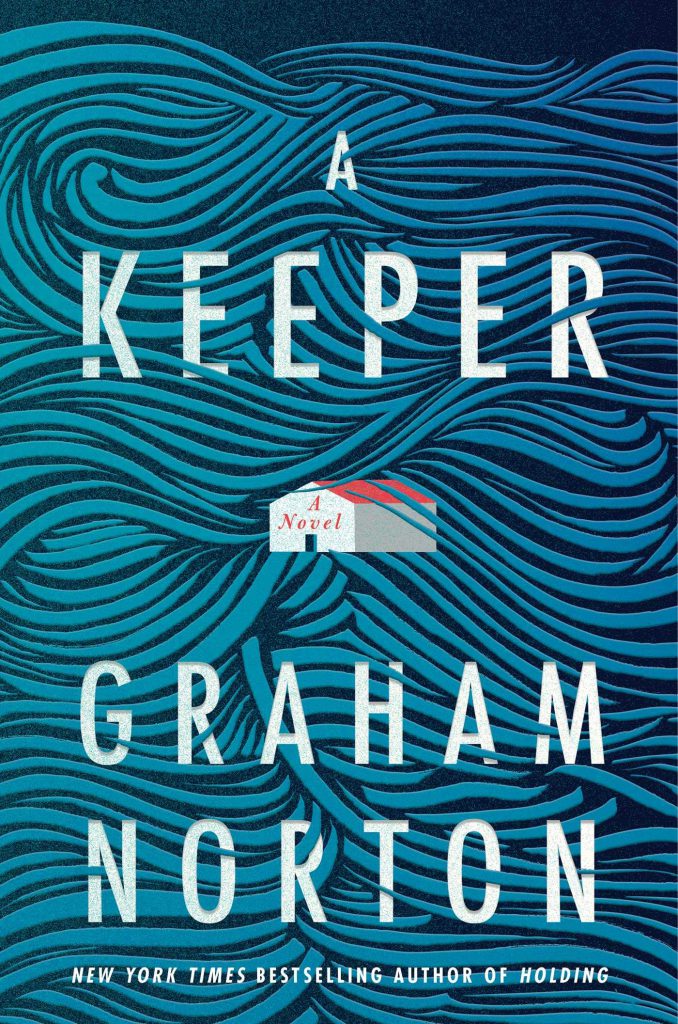
I discovered Graham Norton watching his talk show on BBC America many years ago. I downloaded his latest novel, A Keeper, looking forward to another story set in Ireland where Norton was born and raised. A Keeper begins with Elizabeth Keene, a college professor living in New York City, separated from her husband, raising their 17-year-old son on her own. She returns to the house of her recently deceased mother in a small Irish village. While sorting, she discovers a group of letters that begin to reveal more questions than answers about Elizabeth’s uncertain paternity. The letters tell a story of Elizabeth’s mother Patricia, forty years earlier, communicating with a man named Edward Foley through a lonely-hearts ad in the Farmers’ Journal. When Elizabeth inherits a property that belonged to Edward Foley, she begins a journey to gather more information.
The novel weaves two stories labeled – NOW and THEN – with Elizabeth and Patricia respectively navigating their lives through difficult if not perilous circumstances. Elizabeth’s conversations with those who knew her mother and Edward Foley provide some never known information and with each new fact, there are more questions. A young Patricia arrives for a visit to meet Edward for a second date and his overbearing if not mentally deranged mother creates a scenario that is both unexpected and terrifying.
What Norton does so well in his books is reveal family secrets that are often difficult with deftness and humor. The inner thoughts of characters and dialog are strengths of his writing. Thinking I might be alone in my appreciation of his latest two fiction novels, I discovered A Keeper was shortlisted for in the fiction category for the National Book Awards and his first novel, Holding won an Irish Book Award for Popular Fiction. Graham Norton shows us his comic talent on his talk show but there is much more to him than witty banter. His writing and narration skills are also laudable.
Norton, Graham. A Keeper. Atria Books, 2019.
Friday Reads: “Hag-Seed” by Margaret Atwood

Let me set the scene for you. Felix, is a disgraced theatrical director, down on his luck, he applies to teach a prison literacy program. He has faded into obscurity after suffering personal loss and professional betrayal. As a result, a motley group of prisoners takes on Felix’s challenge of performing “The Tempest” to earn themselves credit in the literacy program. A play Felix has become slightly obsessed with after the fall of his career. Not only do you get to experience the play re-told but also from behind the curtain, an angle only those on the stage usually have access to. Prepare yourself for an interesting and diverse cast of characters, dark plot twists, redemption, and in true Shakespeare fashion, revenge.
I’m always in favor of a good classic transformed, and Margaret Atwood does an exceptional job of bringing “The Tempest” into the 21st century with her novel “Hag-Seed: William Shakespeare’s The Tempest Retold” (Hogarth, 2016.) The novel is a part of Random House’s Hogarth Shakespeare series, where well-known authors re-tell one of Shakespeare’s plays. So for those of you who are fans of”West Side Story,” “Ten Things I Hate About You,” or “She’s the Man,” this is really a series you should check out.
Posted in Books & Reading, General
Tagged Book Review, Friday Reads, Hag-Seed, Margaret Atwood, Reading, Shakespeare, The Tempest
Leave a comment
Friday Reads: “Low Mountains or High Tea” by Steve Sieberson
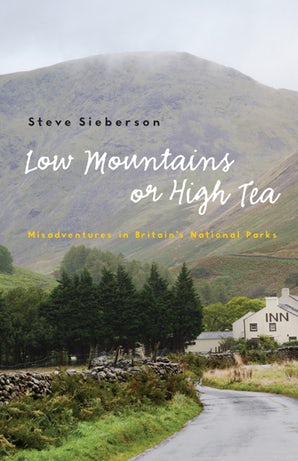
A few years ago, I read and enjoyed Steve Sieberson’s book, The Naked Mountaineer: Misadventures of an Alpine Traveler (University of Nebraska Press). Sieberson renews his adventure writing with an equally delightful Low Mountains or High Tea: Misadventures in Britain’s National Parks. Sieberson explains how he and his wife – lovingly referred to throughout the book as the Italian Woman – found themselves spending a summer in Britain with intention for travel to Britain’s national parks. A rental car, road maps and guidebooks were among the tools for their adventure.
Sieberson grew up in northwest Iowa. A family trip one summer from his rural home in northwest Iowa to Colorado began his lifetime fascination with travel and with high elevations. From there he read books on mountaineering, books that he found at his local library. His boyhood fascination has endured through his adult years. His summer adventure in Britain included mountain experiences, visits to far-flung places, pubs, teahouses, B&Bs, and much, much more.
What I found admirable and especially enjoyable about Sieberson’s book is his wonderful humor. Here’s an example: in conversation with a local about nearby trails, he writes “I said that I wasn’t much interested in the three-peak circuit, but that I just wanted to get to the high point and back in the most direct way possible. The tilt of her head and the lift of an eyebrow suggested that perhaps my slam-bam approach to her magnificent hills did not meet her approval.” Throughout, he pokes fun at British ways and novelties. His characterizations of the many people encountered and interactions are especially memorable.
Sieberson’s book is keenly descriptive and rich in detail. His descriptions of hiking and climbing are nearly photographic in detail. I’d like to know how he captured those many impressions and recorded them with such precision. Sieberson’s commentary on the people, places, customs, and food are more than travel guide worthy.
Sieberson’s law career provided opportunities for travel throughout the world. In recent years, he has added professor to his resume as a Creighton University Law School faculty member.
Sieberson, Steve. Low Mountains or High Tea. University of Nebraska Press, 2019.
Posted in Books & Reading
Tagged #FridayReads, Friday Reads, travel writing, University of Nebraska Press
Leave a comment
Friday Reads: Live Young Forever
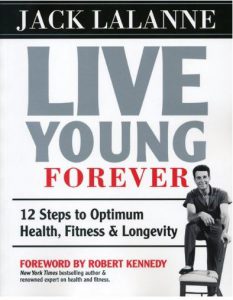
What I was really looking for was a biography about Jack LaLanne, but unfortunately, I was not able to find any. The next closest thing (although I later found out there was a documentary film made about Jack, called Anything is Possible, but only about 39 minutes in length) was Live Young Forever, which did just fine and it was written by Jack himself. How did I get to the point of seeking out this book? Well, for one I never learned of Jack’s world famous feats until years after they occurred, having mostly known him for his juicer infomercials that aired when I was a kid after the Saturday cartoons. Jack’s exercise show was before my time. I remember him as the old health nut in the jumpsuit hawking juicing machines. Then recently, I clicked PBS on and got intrigued by the documentary called Fat, Sick, and Nearly Dead. The documentary follows Australian entrepreneur, author, and filmmaker Joe Cross across the U.S., as he went on a 60-day journey of consuming only juices from fresh fruits and vegetables. While Jack advocated healthy doses of exercise, juice, fish, fruits, and vegetables, Joe’s condition (he weighed over 300 pounds and had a host of health conditions) necessitated a juice only “fast” to kick start his health. Then I realized I’d unfortunately (for me) sold my mom’s Jack LaLanne juicer at a garage sale for $10, so it was off to find another.
Back to Jack. For anyone looking to live a healthier lifestyle, this book has quite a few essential elements such as diet, exercise, and motivation. However, it was Jack’s personal stories that I liked the best. Aside from his health advocacy and TV show, this book also contains numerous stories of his famous feats. Such as a 21-year old Arnold Schwarzenegger, who in 1968 came to Venice beach in California and witnessed a 54-year old LaLanne doing chin-ups and push-ups. Arnold declared a challenge, and lost badly to LaLanne. Said Arnold: “That Jack LaLanne’s an animal! I was sore for four days. I couldn’t lift my arms.” Some of Jack’s other feats included:
- 1955 (age 41) swam from Alcatraz Island to Fisherman’s Wharf, while handcuffed;
- 1956 (age 42) set a claimed world record of 1,033 push-ups in 23 minutes;
- 1959 (age 45) did 1,000 jumping jacks and 1,000 chin-ups in 1 hour, 22 minutes;
- 1974 (age 60) swam the same Alcatraz to Fisherman’s Wharf route, handcuffed, shackled at the ankles, and towing a 1,000 lb boat;
- 1976 (age 62) swam one mile in Long Beach Harbor, handcuffed and shackled, towing 13 boats to represent the original 13 colonies, and containing 76 people; and
- 1984 (age 70) swam 1 mile in Long Beach Harbor, handcuffed and shackled, towing 70 rowboats containing various guests.
Finally, my favorite Jack LaLanne quote:
“15 minutes to warm up? Does a lion warm up when he’s hungry? ‘Uh oh, here comes an antelope. Better warm up.’ No! He just goes out there and eats that sucker.”
Friday Reads: ‘Komi Can’t Communicate’ by Tomohito Oda
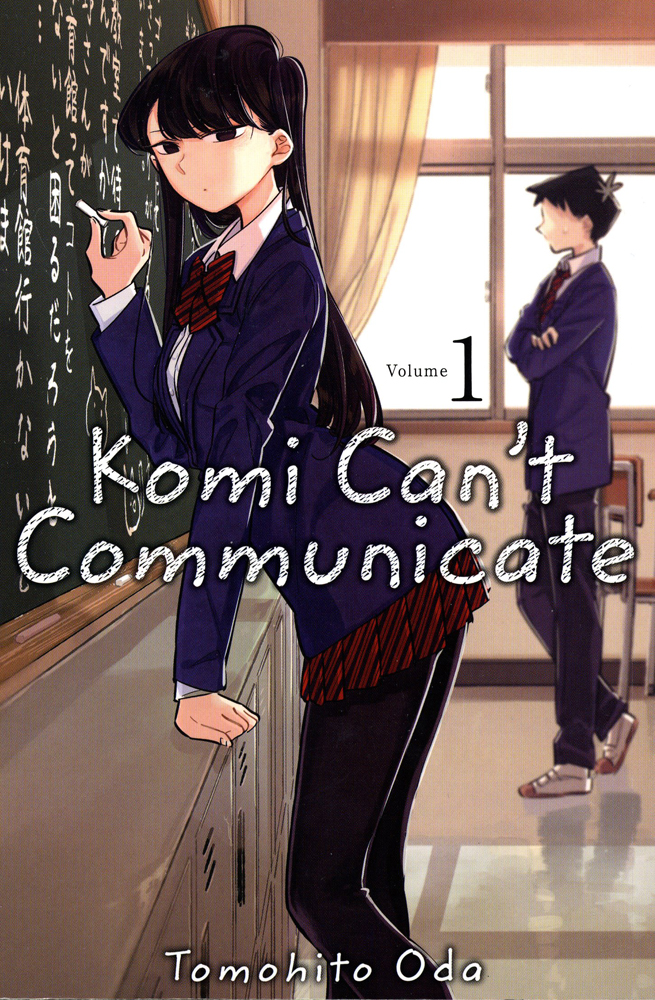
A black and white manga, set to read from back to front, as is done in Japan, this is the first book in a new series. Komi is the ultimate student at the high school and others are afraid to talk to her because she is aloof and extraordinary. Tadano is just happy he is now going to Itan Private High School, and he is planning to blend in and not be noticed. When asked to introduce herself, as all the students in class were asked to do on the first day, she walked to the front of the room, picked up the chalk, and wrote Shoko Komi on the board, walked back to her desk and sat down without saying a word.
At the end of the class, Tadano finds himself alone in the classroom with Komi after all the students and teacher have left. There he discovers Komi is not aloof, she freezes whenever she tries to speak to someone. She writes what she feels on the chalkboard, letting him know that she wants to make friends and hopes he will help her. Tadano finds he has promised to help her make 100 friends, starting with him. Tadano is in trouble now because he doesn’t have any friends yet, aside from Komi, and so has no one to introduce to her. Then he encounters Osana, an old friend from junior high, and she knows everyone in the school. Maybe they are on the way to making 99 more friends for Komi.
The artwork showing Komi with huge eyes or frozen and trembling does a great job of conveying her level of discomfort and social anxiety.
There are three volumes out now, and volume four will be published in December. The entry on Amazon says there will be six volumes in this series, and I definitely want to read the titles that are available now.
Oda, Tomohito. Komi Can’t Communicate, Volume 1. VIZ Media, 2019.
Friday Reads: ‘Mortal Engines’ by Philip Reeve
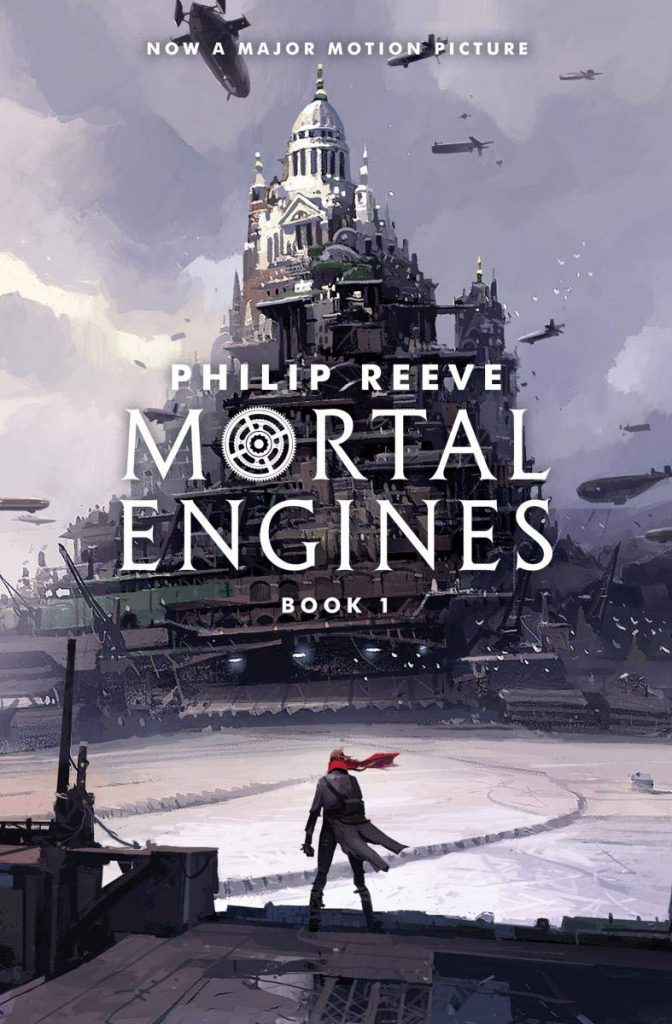 We’re back to the age old question: which was better, the book or the movie?
We’re back to the age old question: which was better, the book or the movie?
In the case of Mortal Engines, I would have to say they were both good! But, they are also quite different from each other. Like many books that have been made into films, the movie version of Mortal Engines, by Philip Reeve, is not an entirely faithful adaptation of the book.
The general storyline is the same in both. In a post-apocalypic future, war has devastated most of the world. In order to survive, many cities have been put on wheels, driven by huge engines. Larger cities chase down smaller ones to capture them, tearing them apart to take their resources and citizens. London has become one of the largest Traction Cities, and some of its leadership are determined to destroy anyone who doesn’t believe that this is how the world should be run. Because there are still cities that work the old way, without wheels, staying in one place.
The book is a Young Adult novel, and it definitely has more of that feel to it than the movie. In the movie, the main characters are not teenagers, so it may appeal more to a different audience.
The endings of the book and the movie are also very different. I won’t give either of them away. But, I will say that they both ended on a hopeful note, looking forward to a potentially better future.
I enjoyed Mortal Engines, both as a book and as a movie. If you read and watch them, don’t expect the same experience. I’d recommend that you consider them two separate stories, based in the same universe. Don’t worry about the fact that the movie isn’t an exact copy of the book. They’re each good in their own way!
Friday Reads: My Sister the Serial Killer by Oyinkan Braithwaite
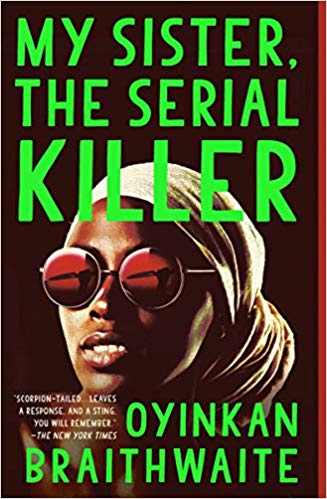
It’s a well known fact that sisters have complicated relationships, possibly none more so than Korede and her younger sister Ayoola. Nurse Korede is hardworking, practical, and reliable, while her beautiful little sister is anything but. Charming and sweet, but ultimately selfish and unmotivated, Ayoola surrounds herself with those that will take care of her: men, friends, and Korede.
While she resents Ayoola’s easy and fun-filled life, Korede nevertheless continues to bail her sister out of every mess she gets into… including murder. Ayoola has killed the last 3 men she dated, calling her big sister to help her hide the evidence. Now, Ayoola has attracted the attention of Korede’s boss (and crush), head doctor Tade. Korede must decide if blood really is thicker than water (or just harder to clean up).
Braitwaite, Oyinkan. My Sister the Serial Killer. Doubleday, 2018.
Friday Reads: Things to Do When You’re Goth in the Country & Other Stories
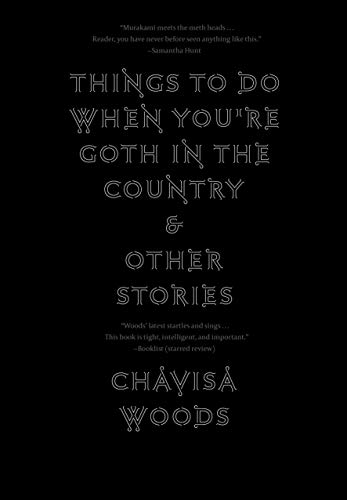
Things to Do When You’re Goth in the Country by Chavisa Woods is a collection of short fiction. Weird Stories. Liminal Stories. Queer Stories.
In the first, “How to Stop Smoking in Nineteen Thousand Two Hundred and Eighty-Seven Seconds, Usama,” a young New York lesbian returns to her rural hometown and strange things start happening: eerie lights in the woods, and a terrifying sense that everything is connected. In “Revelations,” a grieving widow’s friends tip her world upside down in an attempt to save the church she founded. And in the titular story, the narrator provides a sample menu of what they recommend one ought to do when one is Goth and living in the country: including, but not limited to, “a nonconsensual, surprise Southern Baptist exorcism. There’s just nothing else that can compete” (215).
At their cores, these eight stories are about two things: Being, and Doing, and all the contradictions and complications and messes that comes with all of that. To be both stuck and free. To be Goth – to be Queer – to be Outsider – to be of a place, born and raised; simultaneously claimed and unclaimed, known and unknown, liminal and with one foot always lifted and pointed and stepping somewhere else. But the other foot – the other foot, the one we love and hate in equal measure – is still rooted down and planted in the homesoil from which we grew. Woods tells these stories not with melancholy, and not even really with nostalgia, but with a casual shrug of honesty, an unflinching bluntness, and a dry snap of humor. Importantly, her characters don’t just exist, they act — in human, sad, rough-edged, transgressive and get-by ways. And what unfolds is a commentary on the larger nowhere places and strange spaces between friends, strangers, lovers and enemies in the Middle of Nowhere; where the corn rustles in the haunting thick of dark and the bone-thin coyotes laugh as you double-guess the shiver-trick question of movement in your rearview and press the gas a littler harder.
“This is where you belong. There is much to be done” (221).
This book is for mature audiences.
Looking for other unsettling books like this in the chilly prelude to Halloween this season? Here is what this author recommends: https://electricliterature.com/10-books-for-country-goths/
Woods, Chavisa. Things to Do When You’re Goth in the Country. Seven Stories Press, 2017.
Friday Reads: The Chalk Man, by C.J. Tudor

The Chalk Man
by C.J. Tudor
The Chalk Man, by C. J. Tudor is a debut title in the mystery/thriller vein.
To get the full impact of the story, read the prologue, of course. But be prepared for some gruesomeness and violence. It is a murder mystery. But also, it’s about growing up in a small town in the mid 1980s, in England. But except for the definite English flavor, it was remarkably like growing up in a small town in the U.S. But one year, life goes horribly wrong, small actions have horribly large and deadly results, and the lives of a group of friends are changed. We meet the main character, Eddie, in 2016, as an adult, looking back on the incident, so he begins the reminiscing, and then the chapter changes, and the main character is 12, living at home with his dad, a struggling article writer and his mom, an “abortion” doctor. It’s the summer holiday, like our summer break, and the kids are out of school, the fair is in town and it’s the first year they are all allowed to go without adult supervision. Eddie loses his wallet, and while looking for it, sees for the first time, a new teacher, Mr. Halloran, an albino, and teacher. He also backtracks to a ride called a waltzer, and is staring at a beautiful girl, when a car on the ride flies off. In the mayhem, the girl is badly hurt, and Mr. Halloran needs Eddie’s help to keep her from bleeding too heavily until the paramedics arrive. Eddie wouldn’t have lost his wallet if he’d kept it in the fanny pack his parents had him wear, the first small action which leads to much bigger things. He and Mr. Halloran don’t become friends, but there is a kind of bond between them.
Back in 2016, adult Eddie, (42) is an English teacher at the school he graduated from. And we meet Chloe, his lodger, (20), in dyed black hair, who works at an “alternative rock/goth clothing store. Not his usual type of lodger, but his last prospective lodger didn’t show up, without explanation, and a friend knew someone who needed a room. A small action with larger consequences later. And he’s expecting a visit from a childhood friend, one closely associated with the really traumatic year they all went through. He’s come back and wants to write a book about what happened. Because, he says, he knows who really did it. And we all know, someone with that kind of knowledge never lasts long in a mystery!
In some ways, there are two stories going on, one in the 80s, and one in 2016. But they are tied together by small incidents, woven together in a very precise way. It also has a few shocks, that I should have seen coming, but still the one at the end is a big one. Let me know if you saw it coming.
Kirkus Reviews: The Chalk Man, murder, mayhem, and mystery in a sleepy English village.
The Chalk Man, by C. J. Tudor, Crown Publishing, an imprint of Penguin Random House LLC, New York, ISBN 978-1-5247-6098-4
Posted in Books & Reading
Tagged #FridayReads, C.J. Tudor, English village mystery, Friday Reads, murder mystery, mystery, The Chald Man
Leave a comment
Friday Reads: The Bookshop on the Corner
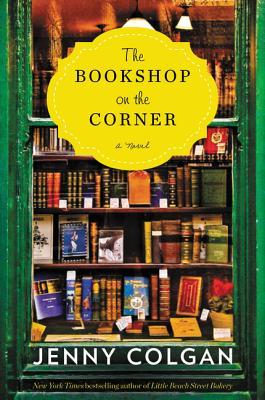
This book strikes fear into the hearts of book-loving librarians everywhere. In The Bookshop on the Corner, Jenny Colgan captures the literary heart and soul of the true bibliophile. Nina Redmond is a heroine who lives for books. Her flat is filled with tumbling stacks of books she rescued from garage sales, countless rounds of weeding in the library, and bookshops. What’s there to be afraid of when you live with your head in a book?
Trigger Warning: A library closes and is taken over by a media resource center in this book. There. I said it. If you can’t handle that brand of pain, please don’t touch this book. In the first chapter of the book, the question is posed: “What would you do if you weren’t a librarian? What are your dreams?”. What if librarianship was no longer part of your identity? It is the kind of question that can make a heart stop beating mid-sentence.
However, if you can take it, there is a literary light at the end of the tunnel. This is the story of how Nina finds a way to strike out on her own to keep her love of books alive and well. By bringing books to a small Scottish town in the middle of nowhere, she maintains her book-loving sanity and discovers a new love for life. In many ways.
Read this book to uncover the state of libraries everywhere. This is set in England and Scotland, but the tides are shifting for libraries everywhere. Find out how libraries can maintain a bookish wonder while adapting to a computer and media-centered world.
I may be a technology librarian personally, but might I just say: long live books! My house is filled with stacks of books. It’s where I go when I don’t want to touch technology. It’s where I go to explore new worlds and see life from different perspectives.
Technology is awesome, but books are my first love. So please, go hug your favorite book. Flip through the well-worn pages and inhale the decadent fragrance known only to book-lovers. Then pick up a new book.
Friday Reads: It’s All Relative: Adventures Up and Down the World’s Family Tree By A.J. Jacobs
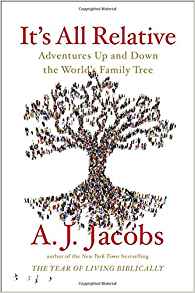
When I’m out of something to read, or just in a rut, memoirs are my go to genre. Something about peeking into the lives of others, and realizing even the biggest star has gone through many of the same things I do, gives me the feeling of being transported to another time and place like no other.
A.J. Jacobs is writer of a number of memoirs, a few of which I’ve also read, mostly centered on a big idea. In his book “The Know-It-All” he tackles every entry in the Encyclopedia Britannica. In “The Year of Living Biblically” he does… well… just that by trying to follow the rules of the bible, and not just the big ones, as literally as possible. A.J. writes not only about his personal experience in each book but also how it affects his family, as well as the research and study surrounding each subject.
For this edition of “Friday Reads” I read “It’s All Relative: Adventures Up and Down the World’s Family Tree”. It starts off with a seemingly innocuous email from the husband of A.J.s eighth cousin. This man’s work on his own family tree has become his life’s passion with over 80,000 relatives on it, including A.J. This sparks something in A.J. who, after some quick poking around on his own, decides that he’s going to throw the world’s largest family reunion.
This book isn’t only just about genealogy but touches on a myriad of subjects like the meaning of family, DNA, privacy, history, race, celebrity, and death. Broken down into a weekly countdown to the reunion the chapters are in bite size chunks which makes for a quick and enjoyable read. There’s also a guide in the back of the book where A.J. goes over how to start researching your own family tree.
Personally I’ve never been into researching my families past, the making of a boring list of names, but this quote from the book tugged at my heart strings enough that I may have to give it a shot…
“What affects me emotionally isn’t seeing the ground where my ancestors’ bones lie. It’s hearing their tales, seeing their images, reading their words. It’s learning about the nickels they strewed on the ground for loved ones… that’s what gets me.”
Friday Reads: Say Nothing: A True Story of Murder and Memory in Northern Ireland, by Patrick Radden Keefe
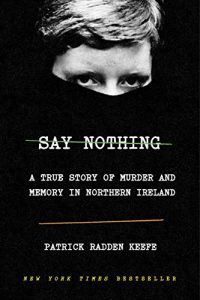
Growing up in the ’70s and ’80s, I was aware of sectarian violence in Northern Ireland—I heard news reports of IRA bombings and hunger strikes—but I definitely didn’t have a clear understanding of the issues. Therefore, when Patrick Keefe published Say Nothing: A True Story of Murder and Memory in Northern Ireland to rave reviews earlier this year, I figured it would be an educational and engaging read. I wasn’t disappointed.
As its subtitle suggests, Say Nothing follows some conventions of the true crime genre. The book begins with the 1972 abduction of Jean McConville, a mother of 10, from her apartment in a public housing complex in West Belfast. Twenty-some chapters later, in 2003, her remains are uncovered on a beach in the Republic of Ireland, just south of the border with Northern Ireland. A pathologist’s report suggests she died from a single gunshot to the back of the head.
The “whodunit” thread definitely runs throughout the narrative, sometimes surfacing as a major plot point, but just as often fading into the background. My sense is that Keefe’s primary interest is in using McConville’s disappearance as a springboard for his broader exploration of the period known as the Troubles—three decades of violence centered in Northern Ireland, beginning in the late 1960s and running through approximately 1998.
My takeaways from reading the book include a more granular understanding of the differences between the Official IRA, the Provisional IRA, and Siin Féin; greater awareness of the various roles played by Gerry Adams during the Troubles, as well as insight into why he is such a controversial figure; and the sobering realization that Bobby Sands was actually one of ten hunger strikers who died at intervals over the summer of 1981.
Say Nothing is exactly the kind of nonfiction book I enjoy. It taught me something new without giving off a dry textbook vibe. It’s also given me a more nuanced understanding of how tensions from the past inform present day concerns—in this instance, related to Brexit. Chief among these concerns is what impact the United Kingdom’s exit from the European Union will have on the border between Northern Ireland and the Republic of Ireland.
Speculation also swirls that Brexit may tip the scale toward Irish unification—a longstanding republican dream. As Keefe writes, “[i]t would be ironic, to say the least, if one inadvertent long-term consequence of the Brexit referendum was a united Ireland—an outcome that three decades of appalling bloodshed and some thirty-five hundred lost lives had failed to achieve.”
Overall, this book is a powerful reminder of William Faulkner’s assertion that “[t]he past is never dead. It isn’t even past.”
Keefe, Patrick Radden. Say Nothing: A True Story of Murder and Memory in Northern Ireland. New York: Doubleday, 2019.
Friday Reads: The Line Between by Tosca Lee
Cults, the impending apocalypse, and an ancient plague.
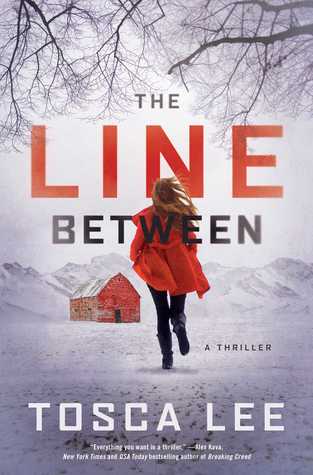
Wynter and her sister spent fifteen years within the walls of the New Earth doomsday cult compound under the charming leadership of Magnus, an ambassador to God himself. As Wynter’s sister, Jaclyn, seemed to thrive in this world, Wynter struggled.
After she’s cast out from her family and community, Wynter is forced into the outside world just in time for it to start ending. An ancient disease has been freed from the melting Alaskan permafrost and is sweeping across America causing victims to fall into madness (as well as general societal chaos and violence). Late one night, Jaclyn reappears with medical samples that might just hold the key. Now Wynter must find a way to get them to a research lab in Colorado before the world really does end as prophesied by Magnus.
The story alternates between past/present, through Wynter’s time living in the compound, to her banishment, as she connects with old family friends and tries to adjust to the outside world, then through the dangerous journey to save (and understand) the world with the help of former military, Chase Miller.
The sequel (A Single Light) comes out September 17th. (Don’t worry though, this first book doesn’t end with a big cliff-hanger.)
Don’t miss Tosca Lee tomorrow at the Book Festival!
Saturday, September 7th 1:00-2:30 p.m.
